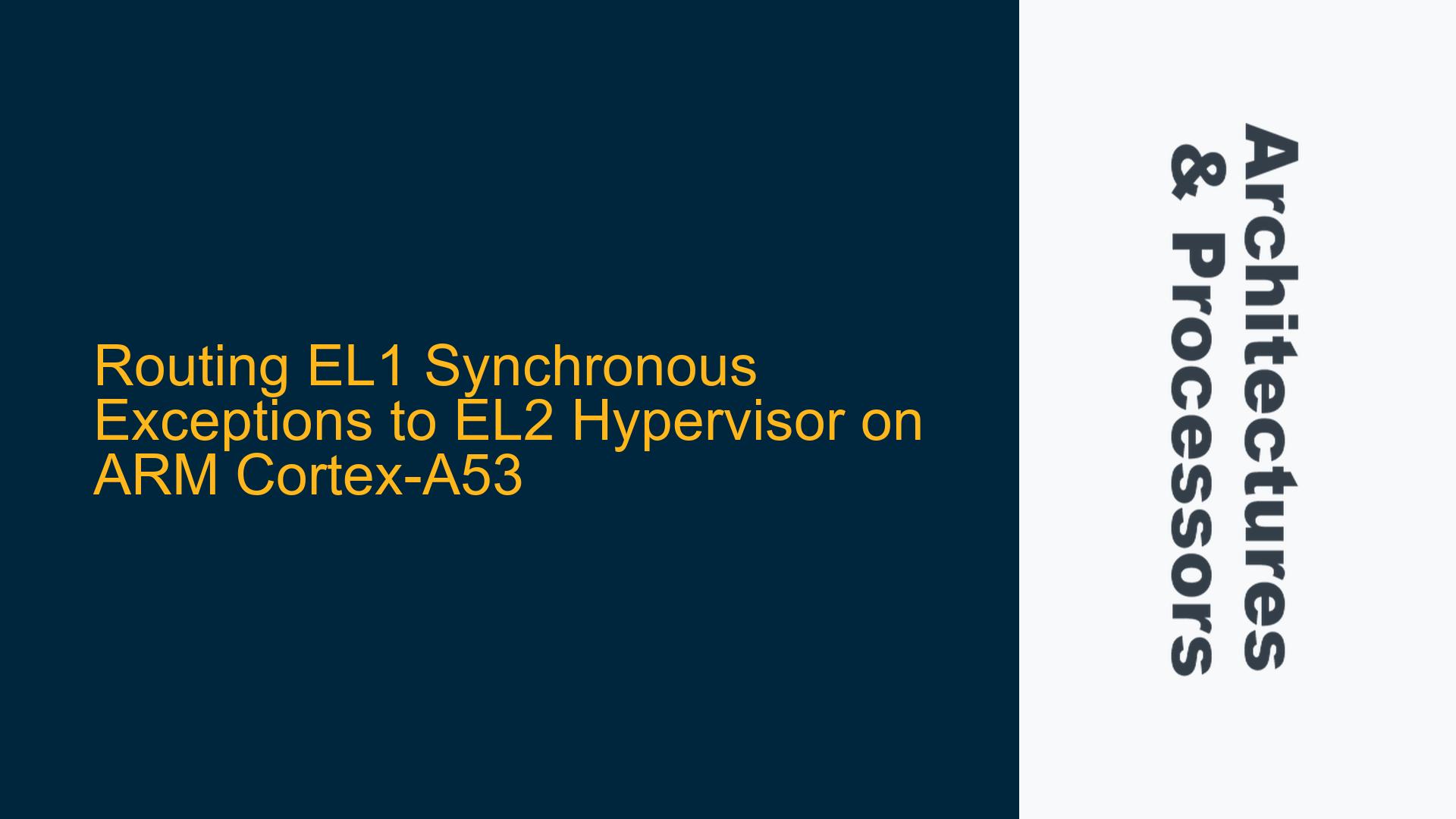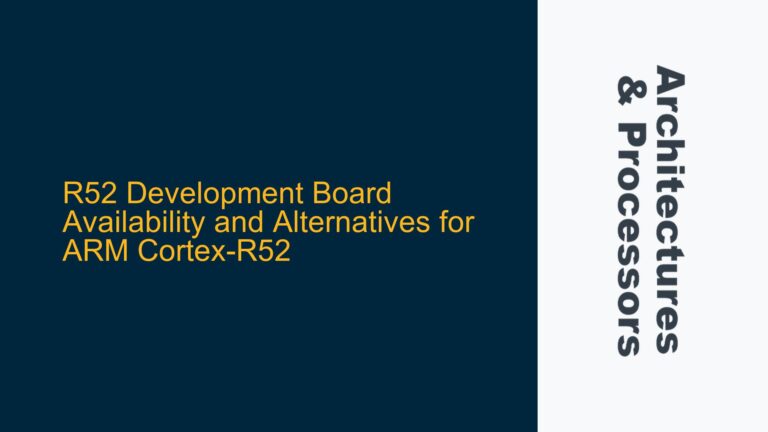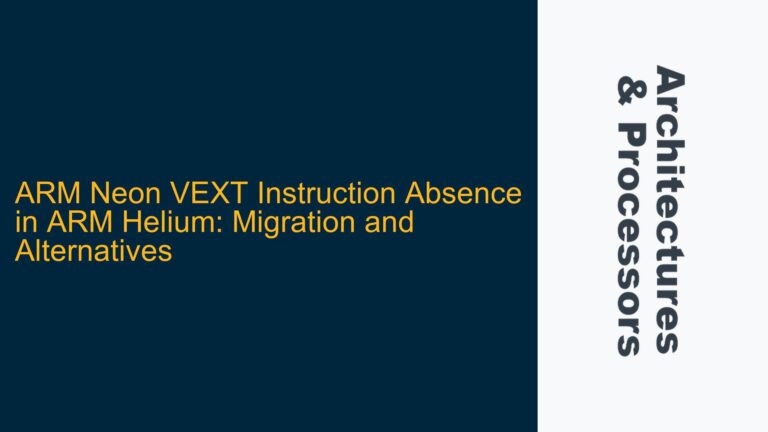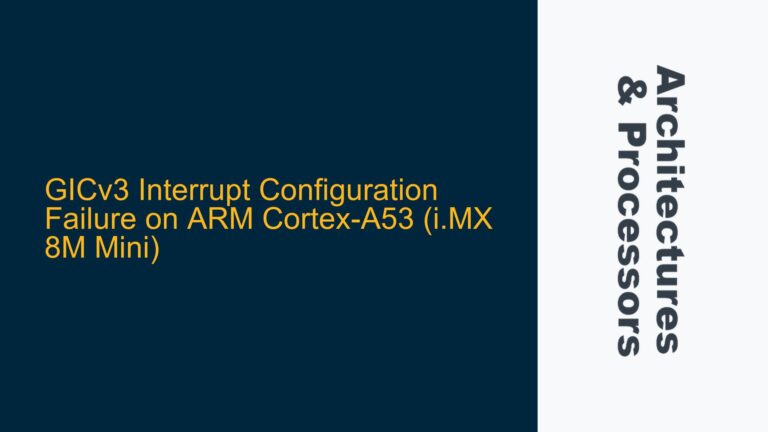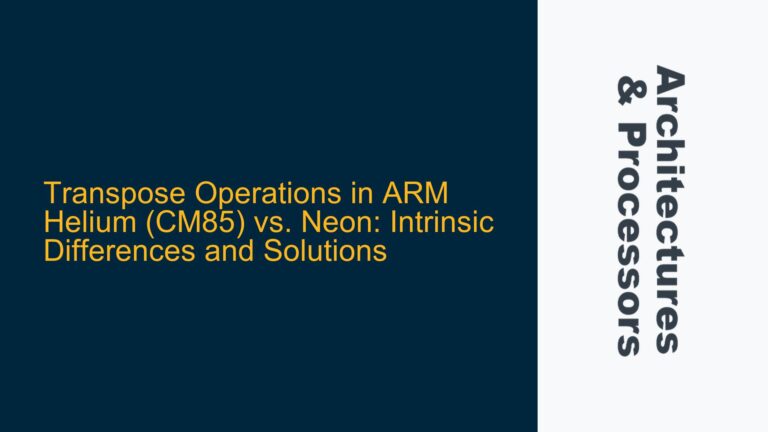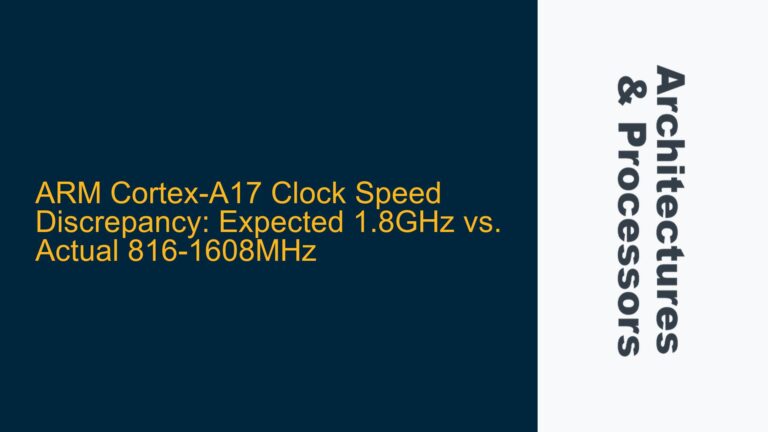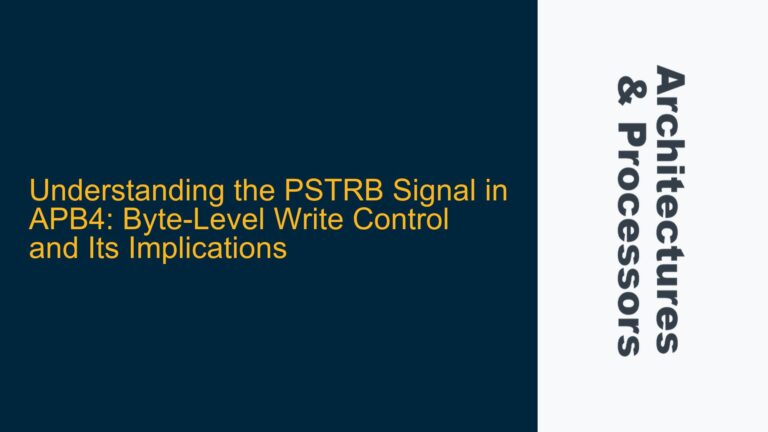EL1 Synchronous Exception Handling and Hypervisor Trapping Challenges
In the context of ARM Cortex-A53 processors, handling synchronous exceptions at Exception Level 1 (EL1) and routing them to a hypervisor at Exception Level 2 (EL2) presents a complex challenge, particularly when the goal is to implement a health monitoring system for virtual machines (VMs). Synchronous exceptions, such as stage 1 Memory Management Unit (MMU) translation faults, are typically handled by the operating system (OS) running at EL1. However, in a hypervisor-based system, there may be a need to intercept these exceptions at EL2 to monitor the health of guest OSes or applications running at EL1.
The primary issue arises from the architectural design of ARM processors, where synchronous exceptions like MMU faults are intended to be handled by the entity that controls the cause of the exception. In this case, the EL1 OS is responsible for managing the stage 1 MMU, and thus, it is best equipped to handle faults related to it. The ARM architecture does not provide a straightforward mechanism to route these synchronous exceptions directly to EL2 without involving the guest OS. This limitation complicates the implementation of a hypervisor that aims to monitor and manage the health of VMs without requiring modifications to the guest OS.
The specific scenario involves a hypervisor attempting to trap a Data Abort exception caused by an unauthorized memory access at EL1. The Exception Syndrome Register (ESR_EL1) value of 0x96000005 indicates a stage 1 translation fault. The hypervisor’s goal is to intercept this exception to inform its health monitor about the degraded state of the guest OS. However, the current ARM architecture does not support this behavior through the Hypervisor Configuration Register (HCR_EL2), which is responsible for configuring exception routing between EL1 and EL2.
Architectural Constraints and Performance Implications
The ARM architecture’s design philosophy assumes that exceptions like MMU faults are best handled by the entity that controls the cause of the exception. In this case, the EL1 OS is responsible for configuring the stage 1 MMU, and thus, it is the most appropriate entity to handle faults related to it. This design choice is rooted in the principle of locality, where the entity closest to the fault has the most context to resolve it efficiently.
Routing all synchronous exceptions from EL1 to EL2 would introduce significant performance overhead. Synchronous exceptions, such as page faults, system calls, and lazy context switching, are common in normal OS operation. If the hypervisor were to intercept all these exceptions, it would need to have detailed knowledge of the guest OS’s behavior to distinguish between normal and abnormal operations. This would not only increase the complexity of the hypervisor but also degrade system performance due to the additional context switches and exception handling at EL2.
Moreover, the hypervisor’s health monitor, which is responsible for shutting down or restarting VMs and logging their faults, would need to be highly sophisticated to interpret the intercepted exceptions correctly. Without deep integration with the guest OS, the hypervisor would struggle to determine whether an exception is indicative of a critical fault or a benign operation. This lack of context could lead to false positives, where the hypervisor misinterprets normal OS behavior as a fault, or false negatives, where it fails to detect actual faults.
Implementing Hypervisor Trapping and Health Monitoring
Given the architectural constraints, implementing a mechanism to trap EL1 synchronous exceptions at EL2 requires a combination of hardware configuration, software intervention, and careful consideration of performance implications. Below are the steps and solutions to achieve this goal:
Configuring HCR_EL2 for Exception Routing
The Hypervisor Configuration Register (HCR_EL2) is the primary mechanism for controlling exception routing between EL1 and EL2. While HCR_EL2 does not provide a direct way to route synchronous exceptions like MMU faults to EL2, it can be configured to trap certain types of exceptions. For example, setting the TGE (Trap General Exceptions) bit in HCR_EL2 can cause certain exceptions to be routed to EL2. However, this approach is not sufficient for trapping all synchronous exceptions, particularly those related to the stage 1 MMU.
To achieve the desired behavior, the hypervisor can use a combination of HCR_EL2 settings and software-based exception handling. For instance, the hypervisor can configure HCR_EL2 to trap specific exceptions, such as Data Aborts, and then use a combination of hardware and software mechanisms to handle these exceptions at EL2. This approach requires the hypervisor to have a deep understanding of the guest OS’s behavior and the ability to interpret the ESR_EL1 value to determine the cause of the exception.
Implementing a Hypervisor Call (HVC) Mechanism
One potential solution is to implement a Hypervisor Call (HVC) mechanism that allows the guest OS to explicitly notify the hypervisor of critical faults. This approach requires modifications to the guest OS to include HVC instructions at strategic points in the code, such as when handling MMU faults or other critical exceptions. While this solution provides a way for the hypervisor to monitor the health of the guest OS, it undermines the goal of having a general-purpose hypervisor that does not require modifications to the guest OS.
To mitigate this limitation, the hypervisor can use a combination of HVC and hardware-based exception trapping. For example, the hypervisor can configure HCR_EL2 to trap specific exceptions and then use HVC instructions to provide additional context to the hypervisor. This hybrid approach allows the hypervisor to monitor the health of the guest OS without requiring extensive modifications to the guest OS.
Leveraging Stage 2 MMU for Fault Detection
Another approach is to leverage the stage 2 MMU, which is controlled by the hypervisor, to detect and handle faults related to memory access. The stage 2 MMU is responsible for translating guest physical addresses to host physical addresses, and it can be configured to generate faults when unauthorized memory accesses occur. By configuring the stage 2 MMU to trap specific memory access patterns, the hypervisor can detect faults that would otherwise be handled by the stage 1 MMU at EL1.
This approach requires the hypervisor to have detailed knowledge of the guest OS’s memory layout and access patterns. The hypervisor can use this information to configure the stage 2 MMU to trap specific memory accesses and then handle these faults at EL2. This solution provides a way for the hypervisor to monitor the health of the guest OS without requiring modifications to the guest OS, but it introduces additional complexity in managing the stage 2 MMU.
Performance Optimization and Trade-offs
Implementing a mechanism to trap EL1 synchronous exceptions at EL2 introduces significant performance overhead, particularly in systems with high exception rates. To mitigate this overhead, the hypervisor must carefully balance the need for fault detection with the impact on system performance. This can be achieved through a combination of hardware and software optimizations, such as:
-
Selective Exception Trapping: The hypervisor can configure HCR_EL2 to trap only specific exceptions that are critical for health monitoring, rather than trapping all synchronous exceptions. This reduces the number of context switches and exception handling operations at EL2, improving overall system performance.
-
Exception Filtering: The hypervisor can implement exception filtering mechanisms to distinguish between normal and abnormal exceptions. For example, the hypervisor can use the ESR_EL1 value to determine the cause of the exception and only handle those that are indicative of critical faults. This reduces the overhead of handling benign exceptions at EL2.
-
Asynchronous Fault Reporting: Instead of trapping every synchronous exception, the hypervisor can implement an asynchronous fault reporting mechanism that allows the guest OS to report critical faults to the hypervisor at a later time. This reduces the immediate performance impact of exception handling and allows the hypervisor to focus on critical faults.
Conclusion
Routing EL1 synchronous exceptions to an EL2 hypervisor on ARM Cortex-A53 processors is a complex task that requires careful consideration of architectural constraints, performance implications, and implementation strategies. While the ARM architecture does not provide a direct mechanism to route all synchronous exceptions to EL2, a combination of hardware configuration, software intervention, and performance optimization can achieve the desired behavior. By leveraging HCR_EL2 settings, implementing HVC mechanisms, and using the stage 2 MMU for fault detection, the hypervisor can monitor the health of guest OSes without requiring extensive modifications to the guest OS. However, this approach introduces additional complexity and performance overhead, which must be carefully managed to ensure the overall stability and efficiency of the system.
